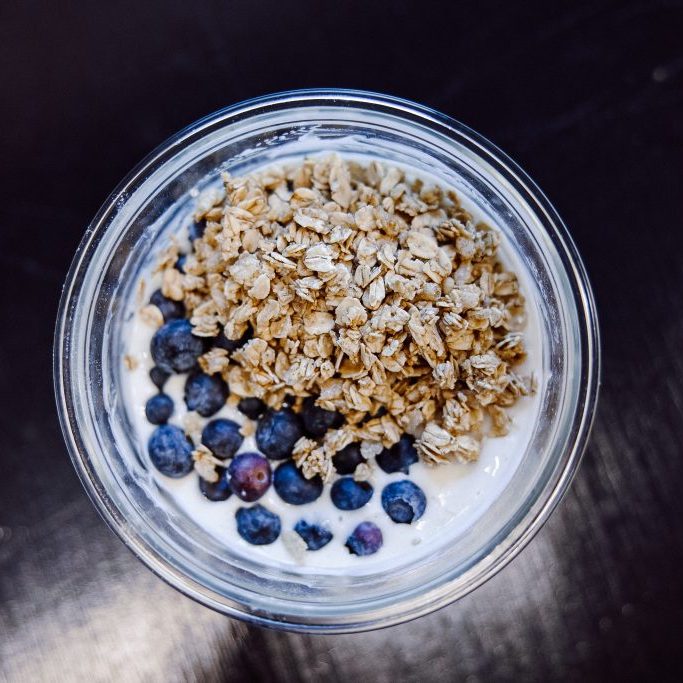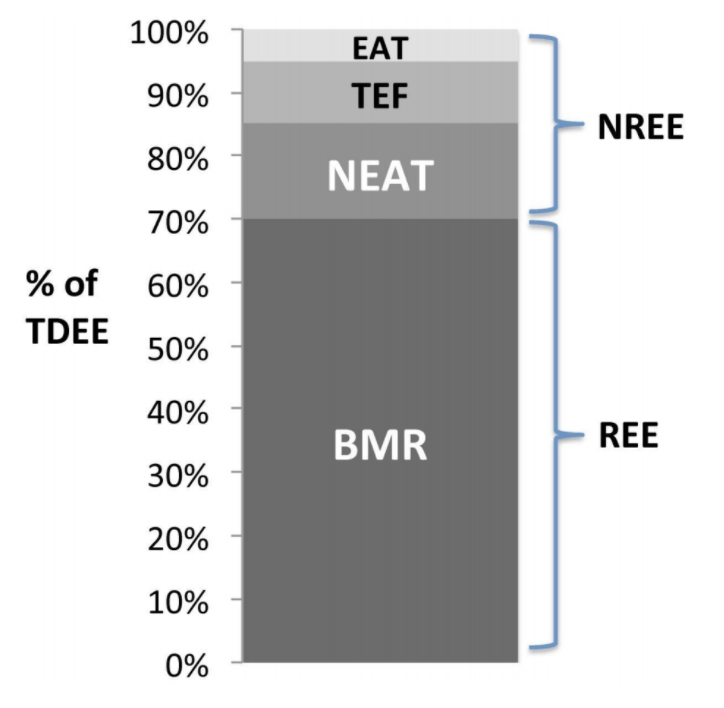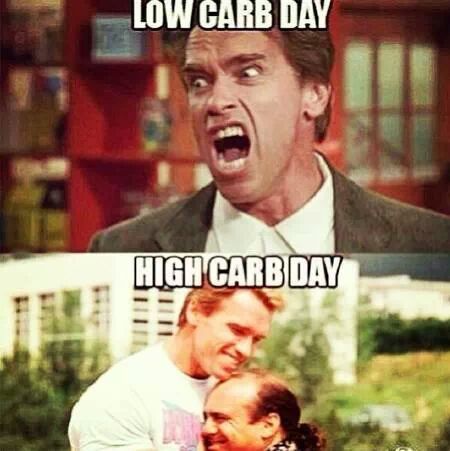Today we are going to talk about how you can maximize the effectiveness of your diet and keep the weight off!
Let’s first think about how a deficit is created:
- Energy intake is decreased.
- Energy output is increased.
Energy restriction is accompanied by changes in circulating hormones, mitochondrial efficiency, and energy expenditure that serve to minimize the energy deficit, attenuate weight loss, and promote weight regain(1).
This is why as dieting progresses, it gets harder and plateaus are reached. The body is fighting to make further weight loss increasingly difficult, increasing hunger, and threatening adherence, and the ability to maintain lean mass.
As the deficit goes on, several hormones are negatively impacted. Several studies involving energy restriction report decreased leptin (leptin increases satiety and energy expenditure), insulin (insulin inhibits muscle protein breakdown and regulates macronutrient metabolism), testosterone (test represses formation of new fat cells), and thyroid hormone (T3 improves metabolic rate), and increases in ghrelin (the hunger hormone) and cortisol (induces muscle protein breakdown)(1,3).
All of these adaptations cause the body to slow down energy expenditure!
How do we expend energy?
TDEE = Total Daily Energy Expenditure
- RMR – Resting metabolic rate
- TEF – Thermic effect of food
- NEAT – Non-exercise activity thermogenesis
- EAT – Exercise activity thermogenesis
In weight loss, TDEE has been consistently shown to decrease. The down regulation of TDEE is often coined as the term “adaptive thermogenesis” and suggests that it functions to promote restoration of baseline body weight. This adaptive thermogenesis may help to explain why we hit plateaus despite low caloric intakes.
As we diet, our body starts to do whatever it can to reduce energy expenditure. BMR, which is a large part of our daily energy expenditure decreases as you lose weight in a diet as a result in loss of metabolically active tissue.(1) You may notice yourself moving less (NEAT is reduced), your exercise may not be as intense (EAT is reduced), and TFE has been shown to maintain but may become lower because you are taking in fewer calories.
Don’t worry friends, over the years we have found ways to work around these adaptations and work with our bodies!
Diet Breaks: Bringing calories up to maintenance for a period of time (1-2+weeks).
Typically when I first tell a client that we are going to plan a diet break, I get one of two reactions.
- HECK YES, I need this!
- Oh man, I don’t know… you want me to eat MORE when I’m trying to lose weight?!
We have to remember that diet breaks are a form of periodization that are helping you work towards your short and long-term goals (read more about nutritional periodization, here)!
Diet breaks can:
→ Improve adherence.
→ Negate metabolic adaptation while dieting.
→ Improve performance.
→ Maintain muscle quality.
→ Avoid post-diet weight regain.
By PLANNING these influxes in food that allows a little more room for life, fueling activity, and less stringent tracking we avoid the cycle of diet → binge → diet harder → binge → , etc. This cycle gets us NOWHERE!
“Do I have to track my macros during a diet break?”
My response to this question is usually yes, but it depends. Tracking is the best way to ensure you are getting close to your diet break targets. If you are struggling with tracking fatigue a short break is not going to kill you.
Following the 80/20 approach will help you maintain some flexibility and still work towards your goals!
→ 80% of the time consume what you normally would and just add some carbs, especially around workouts!
→ 20% make room for life food you couldn’t normally fit during a diet.
There are a few ways to do a diet break:
- Fully track – protein/carbs/fat.
- Track protein and calories – this is typically what I recommend!
- Eat intuitively – I recommend allowing at least 1-2 intuitive days during a diet break! But again, this has its place but unless you are very confident in your ability to get close to the targets.
Do you only use diet breaks during a fat loss phase?
NOPE! Diet breaks can be used as a tool during reverse diets and even gaining phases to promote satiety and glycogen storage.
Why and How? (Research time!)
Diet breaks are often used to make an energy deficit more effective and less costly.
Diet breaks can be used in different fashions that depend on your goals, current body composition, and response to the deficit. Some individuals may just benefit from a diet break when they are experiencing a plateau or have been in a deficit for 4-8 weeks. While others will need them more frequently.
The MATADOR (Minimising Adaptive Thermogenesis And Deactivating Obesity Rebound) study examined whether intermittent energy restriction (ER) improved weight loss efficiency compared with continuous ER and, if so, whether intermittent ER attenuated compensatory responses associated with ER (2).
The MATADOR study found diet breaks to be an effective strategy to maintain a higher resting energy expenditure and amount of lean body percentage when compared with continuous dieting.
As displayed in the figure below you will see, despite increasing calories up to maintenance every two weeks, the diet break group lost significantly more body mass and fat mass than the continuous group did. One of the downfalls to this strategy is that the diet period lasted twice as long with the breaks than without.
Resting energy expenditure (REE) is an important factor to consider while dieting with athletes. Using diet breaks helped the participants maintain a significantly higher REE which leads to a higher metabolic output during and after the diet. The group that did not take these breaks saw a decrease in REE which may have led to weight regain when calories were reintroduced. Using diet breaks will likely result in less diet fatigue and improved performance when compared to linear dieting (2).
A study collection of studies done on bodybuilders utilizing diet breaks and refeeding strategies pre-contest found that pre-contest found that diet breaks seem to have a more robust effect on protecting lean body mass and attenuating decreases in resting metabolic rate.
While not all of us are bodybuilders, we can learn a lot about these methods by evaluating their effectiveness in these extreme diet settings. They also found that triple day refeeds and diet breaks helped athletes maintain a slightly higher metabolic rate (~100 calories) throughout their contest preparation which could assist in their ability to burn more calories without adding activity (3).
Practical application
Try a diet break when:
- You’ve hit a plateau. Yes, sometimes we do just need to drop food but if you’ve been feeling a little fatigued and haven’t had any type of refeeding in several weeks, a diet break is a great way to keep things moving by providing a temporary boost in metabolism, neat, etc.
- You have LIFE to do. I often help clients periodize diet breaks if they have vacations or events coming up.
How to execute a diet break!
Where to start depends on how low your current dieting calories are. Strategies like this are trial and error and require patience!
→ Rule of thumb I start with an increase of ~500-700 calories mainly from carbohydrates and some fat. If you know where you used to maintain you can go by that or multiply the current rate of weight loss/week (in pounds) by 500 and add 100-150 calories.
→ Protein should be at least 0.8-1g/lb during a diet break and 1-1.4g/lb during a deficit.
→ If you are currently doing cardio, cut it in half and keep training as is! This will give your body some time to build and recover from the diet.
→ It is helpful for a lot of people to remove the macro target and solely focus on protein and overall calories.
Be aware that weight fluctuations during a diet break are NORMAL. You are adding more food to your body, more glycogen is being stored, water is shifting, etc, etc. Do not stress and look at AVERAGES for a week or two vs. day to day weight.
After a week on your higher intake, evaluate what happened!
→ Did your weight maintain or trend down with an increase in energy? You may want to go another week!
→ On average, did your weight climb a bit? If you are feeling replenished from the diet break, go back to the deficit. If you aren’t, pull back a bit (100-150 calories) and see what happens.
Planning your diet break!
When?
A diet break should be at least 7-14 days, but two weeks is recommended. Our bodies often need more than a week to recover hormones back to normal levels.
How long?
Frequency depends on how long you are dieting and your level of leanness. I recommend getting ahead of diet fatigue by playing with refeeds early on and using diet breaks more frequently as the diet goes on and you get leaner. The body fights back more when we have less fat!
A major pro of this tactic is it can help you maintain the weight you lost after the diet is over. We aren’t going to dive too deep into this today but as I mentioned before, you can still implement diet breaks while reverse dieting by modulating the weekly increases with planned break weeks!
Dieting with diet breaks may take a little longer but you will likely finish the diet with healthier hormone levels, more normal hunger signals, and possibly even a better body composition!
References:
- Trexler ET, Smith-Ryan AE, Norton LE: Metabolic adaptation to weight loss: implications for the athlete. J Int Soc Sports Nutr. 2014;11(1):7.
- Byrne, N M et al. “Intermittent energy restriction improves weight loss efficiency in obese men: the MATADOR study.” International journal of obesity (2005) vol. 42,2 (2018): 129-138. doi:10.1038/ijo.2017.206
- Effectiveness of Diet Refeeds and Diet Breaks as a Pre Contest Strategy Article in Strength and Conditioning Journal · March 2020























































































































































































































































































































































































































































































